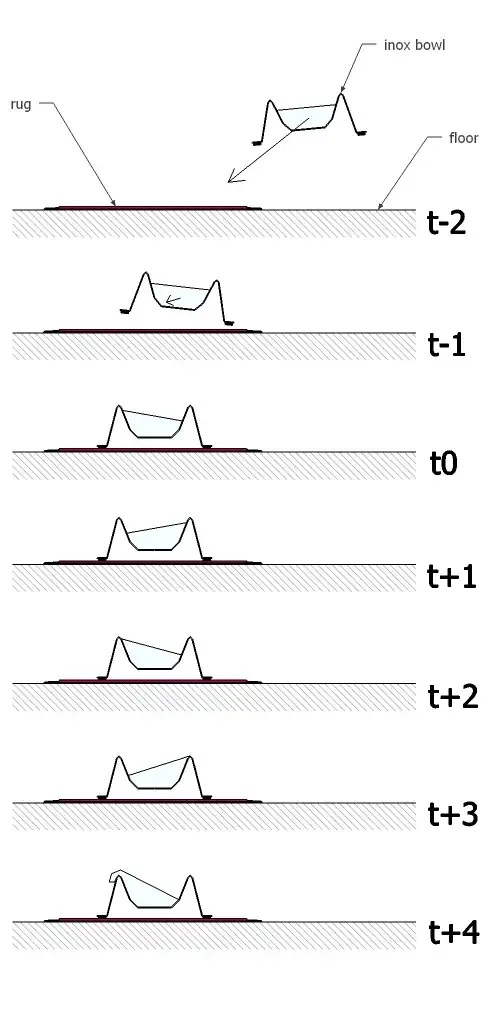The two horizontal sloshing modes could have slightly different frequencies (e.g. if the rotational symmetry is not perfect).
If you then start with the combination of both, but out of phase, which is a circular sloshing pattern, then sometime later you will have both in the same phase which is diagonal sloshing, with $\sqrt 2$ times the original amplitude if no energy has been lost.
Of course the initial movement does not have to be exactly circular, which would probably be noticed immediately. But if there only is some circular component in it, this can still lead to increasing amplitude, just not by the full factor $\sqrt 2$.
And the symmetry breaking could come from the mat below it, which might have different compliance in orthogonal directions caused by the way it is manufactured.
